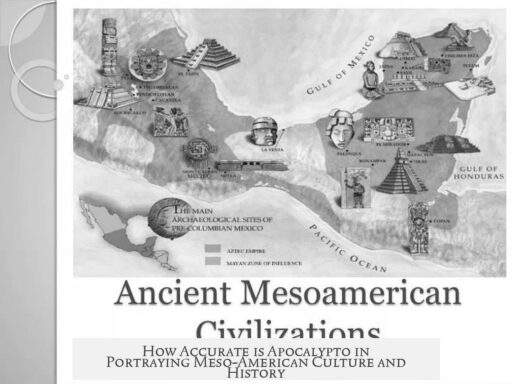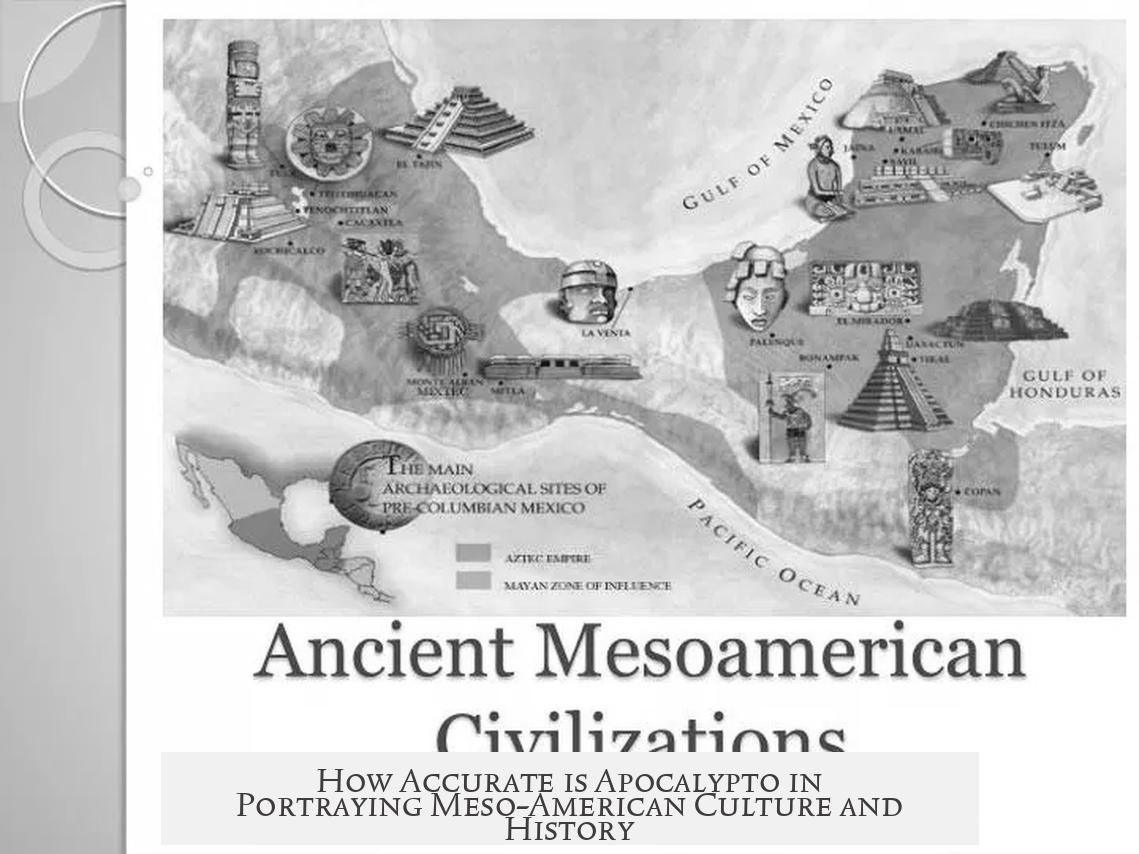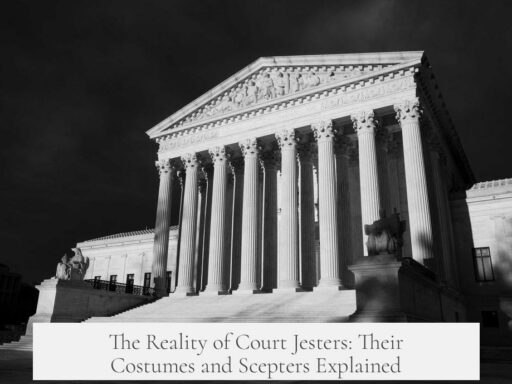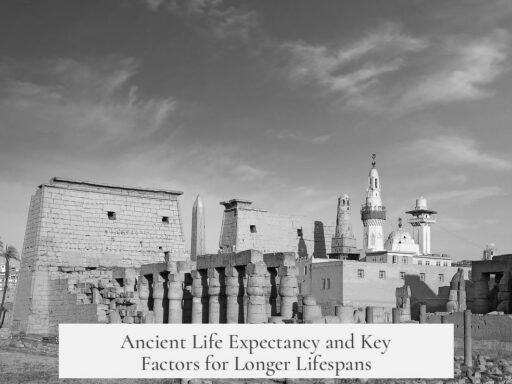Apocalypto presents Meso-America with a blend of cultural elements and historical inaccuracies, especially regarding Mayan and Aztec practices. The movie often confuses Mayan customs by incorporating Aztec-style human sacrifices, distorting the historical realities of both civilizations. It misses key distinctions between ritual practices, timelines, and architectural details. However, the film’s use of authentic language and location filming adds notable cultural depth.
One major concern is the portrayal of human sacrifice. The movie shows large-scale, graphic sacrifices resembling Aztec rituals rather than authentic Mayan ones. Aztecs practiced extensive mass sacrifices, such as removing hearts and ritual decapitation. The Maya performed sacrifices too but on a far smaller scale. They often cast victims into sacred cenotes instead of cutting out hearts.
- The Aztec approach involved dramatic offerings to heaven with hearts removed as gifts.
- Mayan sacrifices revered victims as divine in certain cases and differed in scale and symbolism.
- Replicating Aztec rituals for a Mayan setting skews the historical record.
The film also inaccurately depicts various other aspects of Meso-American history:
| Area | Inaccuracy |
|---|---|
| Temple Architecture | Several details do not correspond to known Mayan structures; design elements combine features improperly. |
| Historical Timeline | The film’s timeline of the postclassic period is inconsistent; events and cultural phases overlap or are out of sequence. |
| Spanish Conquest | Timing and representation of Spanish contact are simplified and somewhat ambiguous. |
The film’s ending, showing Spanish ships approaching the coast, sparks diverging interpretations. Some critics read this as endorsing Christianization as a force that tames “barbaric” Mesoamerican cultures. Others argue it introduces ironic complexity. The Spanish conquerors themselves are brutal and fanatical. The protagonist’s awareness suggests a looming violent clash, complicating any straightforward historical narrative.
In contrast to its historical faults, Apocalypto achieves remarkable cultural authenticity through technical choices:
- Filming took place on location in Mexico’s Yucatán Peninsula.
- Characters speak the Yucatec Maya language, rarely heard in mainstream cinema.
- This lends a unique atmosphere not found in many Hollywood productions.
Regarding Aztec ritual practice and philosophy, the film shows some correctness but lacks depth. From an art historical viewpoint:
- Aztecs viewed sacrifice as a means to release life energy (often blood) into the universe, not merely death.
- Individuals mattered little compared to the flow of vital energy across worlds—living, dead, animal, divine.
- Battles were often ritualized to minimize bloodshed, with captured enemies sacrificed in controlled, meaningful ways.
- Sacrifice represented acceptance of fate and societal duty, integral to Aztec cosmology.
Apocalypto replicates some Aztec sacrificial methods visually, yet it overlooks these nuanced native attitudes. It conveys the physical acts but not the rich philosophical context.
Key takeaways include:
- The movie conflates Mayan and Aztec human sacrifice inaccurately, misleading viewers about distinct cultural rituals.
- Several errors exist in architecture, historical timeline, and depiction of Spanish arrival.
- The ending with Spanish ships invites varied interpretations around colonialism and cultural clash.
- Use of Yucatec Maya language and filming on authentic locations provide cultural uniqueness missing in many films.
- Aztec philosophical views on sacrifice and life energy are complex and partly absent in the film’s narrative.
How accurate is the movie Apocalypto when it comes to the presentation of Meso-America?
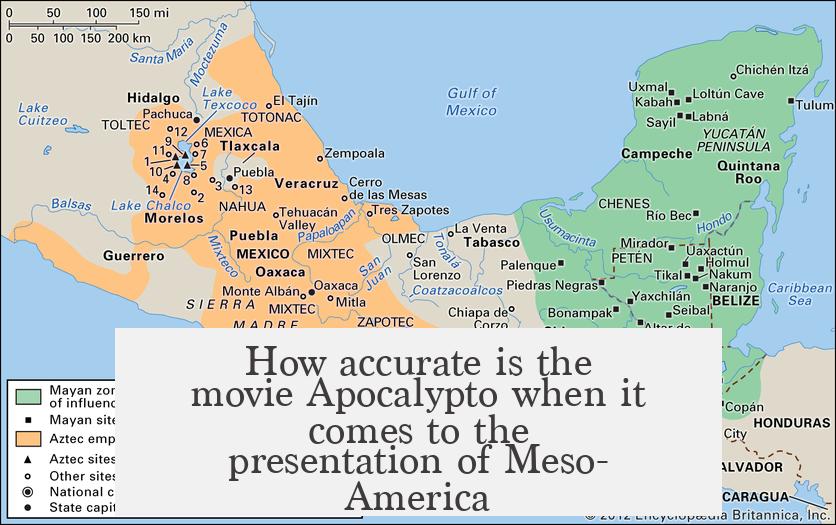
At face value, Apocalypto dazzles with intense action and vivid visuals, but when you ask how accurate it is about Meso-America’s history and culture? It’s a mixed bag. The movie blends different cultural practices, compresses timelines, and interprets symbolism in ways that spark debate among historians and enthusiasts alike.
Let’s dive into the heart of the matter—quite literally—and explore where the film hits the mark and where it stray like a lost jaguar in the jungle.
Did the Mayans really practice heart-extracting mass sacrifices like the Aztecs?
One of the biggest hiccups in Apocalypto is its portrayal of human sacrifice rituals. The film shows Mayan sacrifices using Aztec-style brutality—mass sacrifices, ritual heart removal, and grisly decapitations. Historically, this is an inaccurate mashup.
The Mayan civilization engaged in human sacrifices, but the scale and rituals differed. Mayans rarely staged public, mass sacrifices with ritual heart extraction. Instead, they preferred sending offerings into sacred cenotes—natural sinkholes filled with water believed to be portals to the underworld.
Think of it this way: the Aztecs had an obsession with literal bloody offerings to their gods, while the Mayans had a more spiritual and less bloody approach overall.
While both cultures held victims in high spiritual regard (sometimes treating them almost like gods after their sacrifice), the methods and cultural meanings diverged substantially. So, the film incorrectly transplants Aztec sacrificial practices onto the Mayan setting, muddying the historical waters.
What about architecture and timelines? Are those on point?
If you’re hoping to pick up detailed, precise Mayan architecture—or an accurate time setting—the film misses the mark here too.
Experts note dozens of small but glaring inaccuracies in temple architecture and historical context. The film’s depiction of the sprawling cityscapes and temple designs borrow liberally from various Mesoamerican influences. It’s a blend, rather than a faithful reproduction.
Additionally, the timeline feels rushed. The movie places the plot in the late postclassic period, just before Spanish contact. But the architecture and cultural elements don’t precisely match that era’s realities. The Spanish arrival itself, appearing as ships on the horizon in the closing scenes, is simplified and leaves plenty of room for interpretation.
Is the ending hopeful or ominous? The Spanish ships spark debate.
That famous final shot—Spanish ships off the coast—has historians and viewers arguing fiercely about its meaning.
- Negative spin: Some interpret this moment as the movie saying Spanish conquest was a “necessary evil” to civilize “barbaric” Mesoamerican societies.
- More nuanced view: Others see sharp irony. The brutal, fanatical Spanish invaders represent a worse form of violence looming on the horizon.
The protagonist, Jaguar Paw, seems to understand the catastrophe coming. He narrowly escapes savage ritual and then confronts an even bigger nightmare: colonization by ruthless foreigners. This ending is ambiguous and invites the audience to think critically about conquest, survival, and cultural collision.
But hold up, aren’t there some genuine cultural touches?
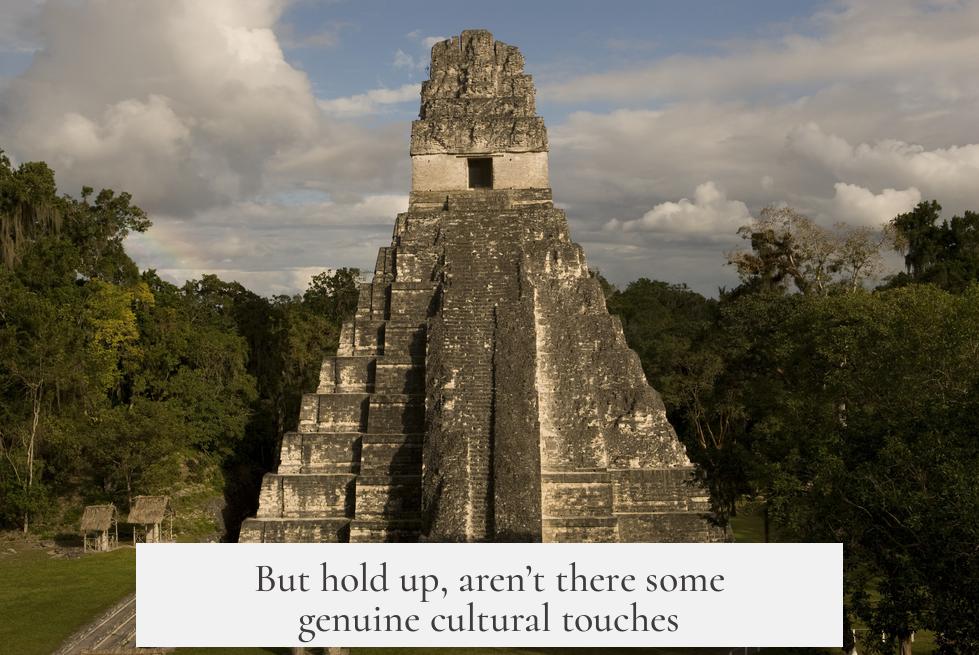
Absolutely! Despite the historical liberties, the film scores points on cultural authenticity with two standout features.
- It was filmed on location in dense Yucatán jungles, which adds raw, natural authenticity to the immersive setting.
- The cast speaks Yucatec Maya, the authentic language of the region.
This use of native language is almost unprecedented in Hollywood productions and gives the film a cultural uniqueness that few others achieve. It underscores the filmmakers’ respect—or at least interest—in regional identity, even if the historical details slide around.
How accurate is Apocalypto about Aztec philosophy and ritual?
While the film borrows Aztec sacrificial imagery to dramatize the story, it misses some deep conceptual truths about Aztec belief systems.
Aztec culture didn’t view individuals as isolated beings but parts of a vast cosmic system. Their gods were multi-faced, representing life and death, animal and human. The Aztecs believed life energy—and especially blood—flows between the living and spiritual worlds.
That’s why ritual sacrifice wasn’t just gruesome entertainment—it was viewed as freeing vital energy, a way to maintain cosmic balance. Instead of fearing death, those chosen accepted sacrifice as an honored role in maintaining the universe’s cycles.
The movie shows Aztec techniques fairly well but glosses over these crucial philosophical layers. The true meaning? Sacrifice symbolized social and spiritual duties, fate acceptance, and sometimes ritualized, symbolic battles rather than nonstop carnage.
So what’s the bottom line for the curious viewer?
| Aspect | Movie’s Portrayal | Historical Reality |
|---|---|---|
| Sacrificial practices | Aztec-style mass sacrifices in Mayan context | Mayan sacrifices smaller, often cenote offerings; Aztecs had ritual heart removal |
| Architecture & Timeline | Mixed elements, compressed periods | Specific temple styles, longer postclassic timeline, precise conquest timing |
| Ending symbolism | Spanish ships as ambiguous sign | Open to interpretations, from conquest civilization to brutal clash irony |
| Cultural authenticity | Filmed on location, real Yucatec Maya language | Accurate cultural immersion despite historical errors |
| Aztec philosophy | Accurate ritual acts, shallow cultural depth | Complex views on life, death, and sacrifice as cosmic energy flow |
Apocalypto is like a high-octane history cliffhanger. It brings Meso-America alive in thrilling ways but plays fast and loose with facts—especially by mixing Mayan and Aztec elements. It’s a film that invites you to revel in its drama but also encourages a second look and some research to truly appreciate the deep, nuanced cultures that inspired it.
What do you think? Does Hollywood have the license to bend history for a gripping story? Can films like Apocalypto spark curiosity about real history—even if they don’t get every detail right? Drop your thoughts below!
